The best in mission critical technology
The Top Tier Products Awards are back again to recognize the most critical mission critical products on the market today.
“There are so many sides to the mission critical story,” said Sarah Harding, group publisher for Mission Critical. "What I love about this contest is that it recognizes so many aspects of the industry – from power solutions, thermal management, and safety to cabling, IT equipment, and software. Like our past winners, the 2023 Top Tier Products demonstrate manufacturing excellence while embracing safety, energy efficiency, and innovation.”
So, from batteries, cables, IT equipment, racks, and software to power solutions, thermal management, safety, security, and UPSs, Mission Critcal has done the research, and the judges have spoken ...
Check out this year's Top Tier Products.
Batteries
Natron Energy
Blue Rack Sodium-Ion Battery Cabinet BR-250

Blue Rack is the first sodium-ion battery cabinet designed for mission critical applications, such as data centers, peak power shaving, and other industrial power environments where a reliable backup power source is required to ensure 100% uptime.
Image courtesy of Natron Energy
Blue Rack is the first sodium-ion battery cabinet designed for mission critical applications, such as data centers, peak power shaving, and other industrial power environments where a reliable backup power source is required to ensure 100% uptime.
Natron’s Blue Rack battery cabinet not only delivers tremendous power density but also discharges and recharges rapidly, is sustainably and ethically sourced, and is safe and completely nonflammable.
Powered by Natron’s Blue Pack battery, the Blue Rack can be configured to provide up to 500 kW of backup power and features a wide operating temperature range (minus 30° to 50°C), round-trip efficiency >97%, and over 50,000 deep discharge cycles.
The innovative technology can produce 40 W/Wh — a giant leap in sustainability compared to lithium-ion batteries, which produce 10 W/Wh, and lead acid that come in at 7 W/Wh.
“As the world increasingly looks for safe and sustainable energy storage, sodium-ion technology innovation will meet that need,” said Brian Kennedy, director of business development and marketing for Natron Energy.
Cables/Cable Management
Legrand
Cablofil Data Center Solutions
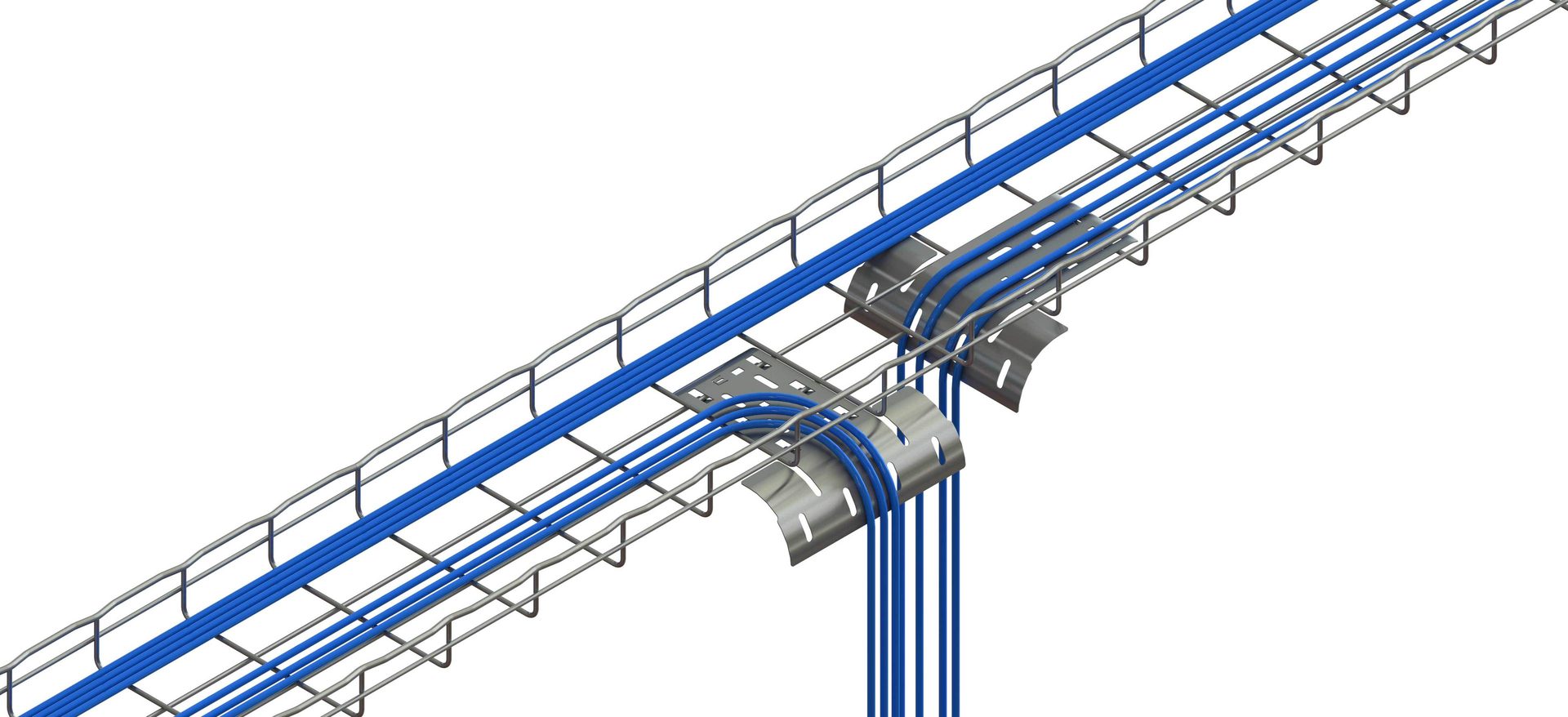
Legrand, a global specialist in electrical and network infrastructure solutions, has expanded its Cablofil line to offer two new innovative cable dropout accessories.
Images courtesy of Legrand
Cable management is an essential element for keeping data centers running smoothly. One challenge users encounter is how to run expansive lengths of cable without compromising the support of the wire mesh tray at the dropout location. That’s why Legrand expanded its Cablofil line to offer two new innovative cable dropout accessories.
“Cablofil makes it easy to select the right dropout solution for your unique needs by now offering a spectrum of cable dropout accessories,” said Bob Crain, director of marketing and product development for Cablofil at Legrand. “The two new dropout accessories are the perfect support solution for running cables in high-capacity centers without compromising strength and support for flexibility and speed.”
The Basic Dropout (BDO) smooths the transition of cabling dropping out of the wire mesh tray. These dropouts snap into place without hardware and reduce the strain of cables as they exit or enter the tray. It mounts at the end of the wire basket cable tray parallel or perpendicular to the tray bottom. The 4-inch width capacity allows small cable bundles through the mesh. The full 90-degree drop eliminates pressure points on cables as the 2-inch radius reduces cable stress. Extended side wings offer extra cable support. Tie-down slots are available to assist and secure the cables as they exit the dropout. With this dropout solution, wires need to be cut on the cable tray. The solution is compatible with all Cablofil Wire Mesh trays.
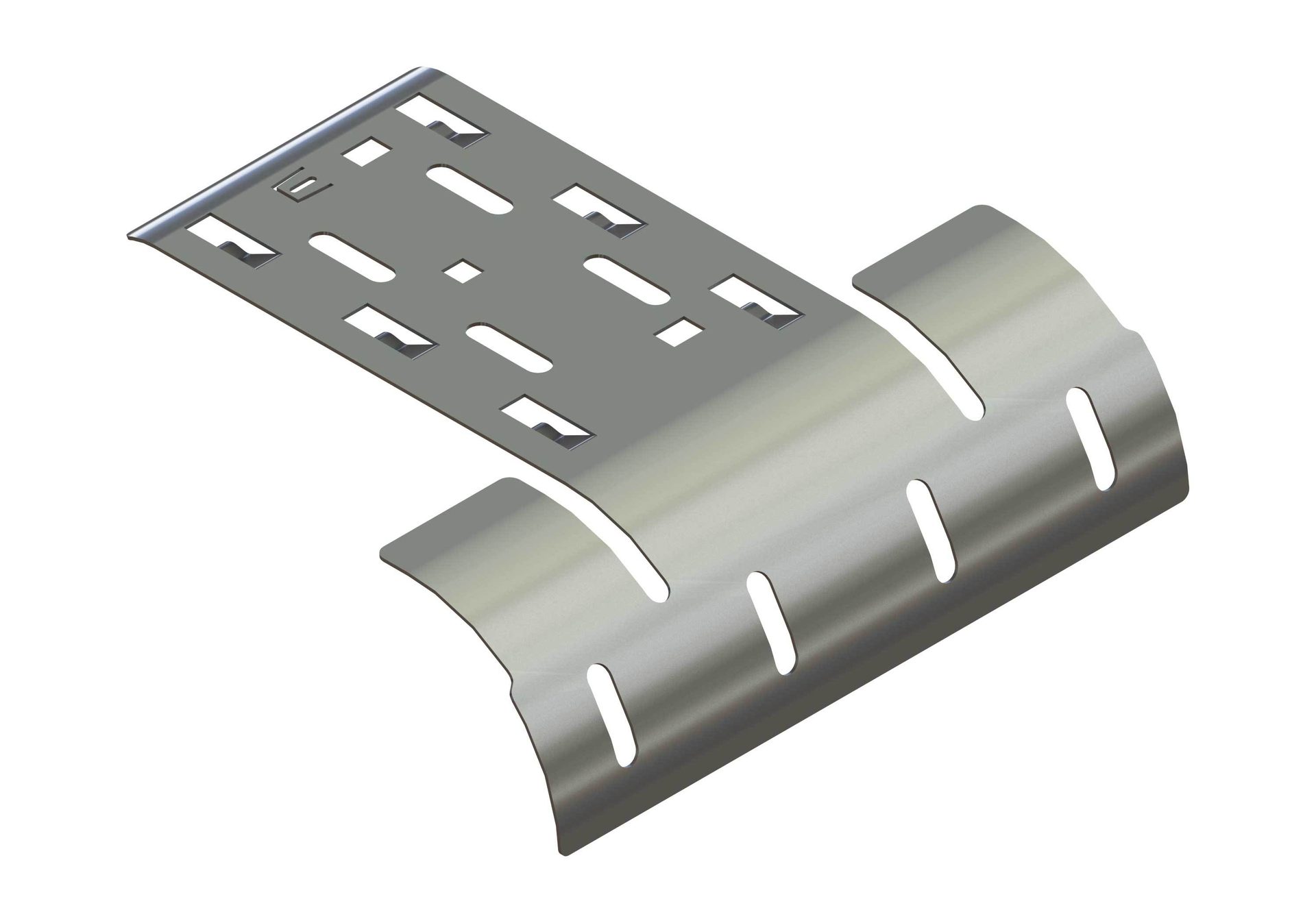
Cable management is an essential element for keeping data centers running smoothly.
The Standard Dropout (SDO) offers stronger cable support and creates a seamless transition for cables on the side of the wire mesh tray without any cutting. This protects cables as they exit the tray while maintaining all the strength and support of the wire mesh. The SDO is available in 150 (6-inch) and 300 (12-inch) widths that, when used in combination, provide options for 6-, 12-, 18-, and 24-inch. The full 90-degree drop eliminates pressure points while the 3-inch radius reduces stress on the cables. The solution is compatible with all Cablofil Wire Mesh trays by interlocking on the side wires for added rigidity. The dropout mounts over the side or at the end of the wire basket cable tray (both atop or below wire basket wires). Tie-down slots are available to assist and secure the cables as they exit the drop out. No tray cutting required.
The Universal Dropout (UDO), which is the original product in this line, is the premiere Cablofil dropout solution. As the dropout with the strongest cable support, the UDO protects larger capacities of cables all without compromising the strength of the cable tray. It is ideal for copper, fiber optic, or PoE cabling. This dropout solution makes it easy to perform cable drops directly off the side of the tray without having to make any wire tray cuts or modifications.
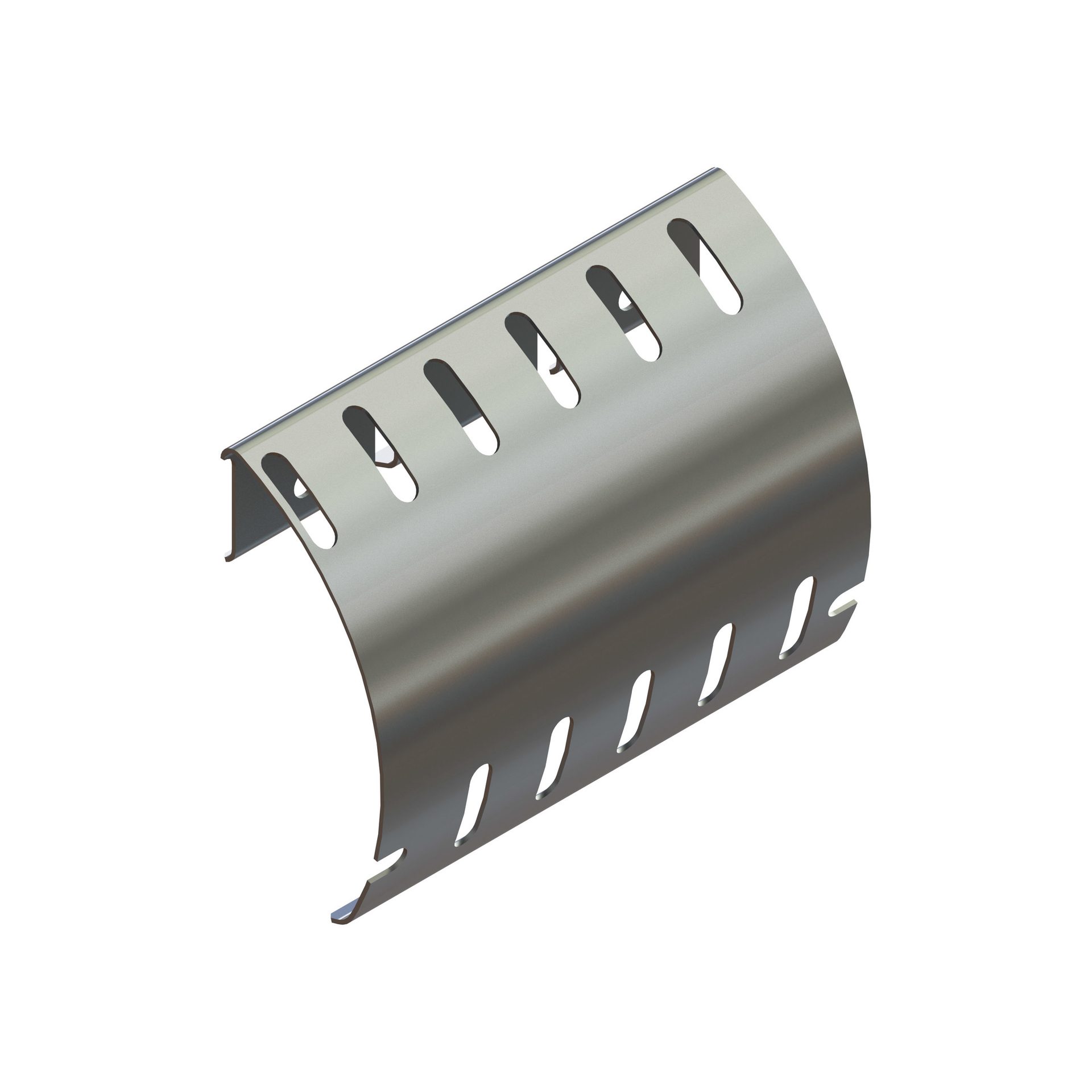
These dropout accessories are the perfect support solution for running cables in high-capacity centers without compromising strength and support for flexibility and speed.
Legrand’s goal with the expansion of the Cablofil line was threefold. Goal one was to create products that are simple and easy to install to drastically reduce labor. Goal two was to create products that have a significantly higher (50% or greater) cable capacity while reducing the stress and strain on the cable by at least 30%. The third — and probably most significant — goal was to create a product that allows the dropout location to be relocated when the data hall is reconfigured.
“There is a huge unmet need to provide the ability to dropout cables without any modification to the cable management system,” Crain said. “By eliminating the need to modify the cable tray when cabling needs to be rerouted, there is a major reduction in cost and time to bring the hall back online and productive.”
It Equipment
Compass Quantum
Quantum
Compass Quantum's 100 kW modular data center solution is designed to meet the needs of any business that requires standard compute, storage, network, or high-performance computing (HPC) capabilities with immediate capacity requirements Whether a business is operating in the finance, health care, retail, or manufacturing sectors, Quantum's modular data center solution offers flexible and scalable infrastructure that can adapt to changing business needs. This allows businesses to easily expand their operations, increase their compute capacity, or upgrade their technology without the hassle of traditional data center deployment models. Moreover, Quantum's 100 kW modular data center solution is not limited to a specific geographic location. With the ability to deploy data centers anywhere in the world, businesses can take advantage of new market opportunities, expand their global reach, or address regional compliance requirements.
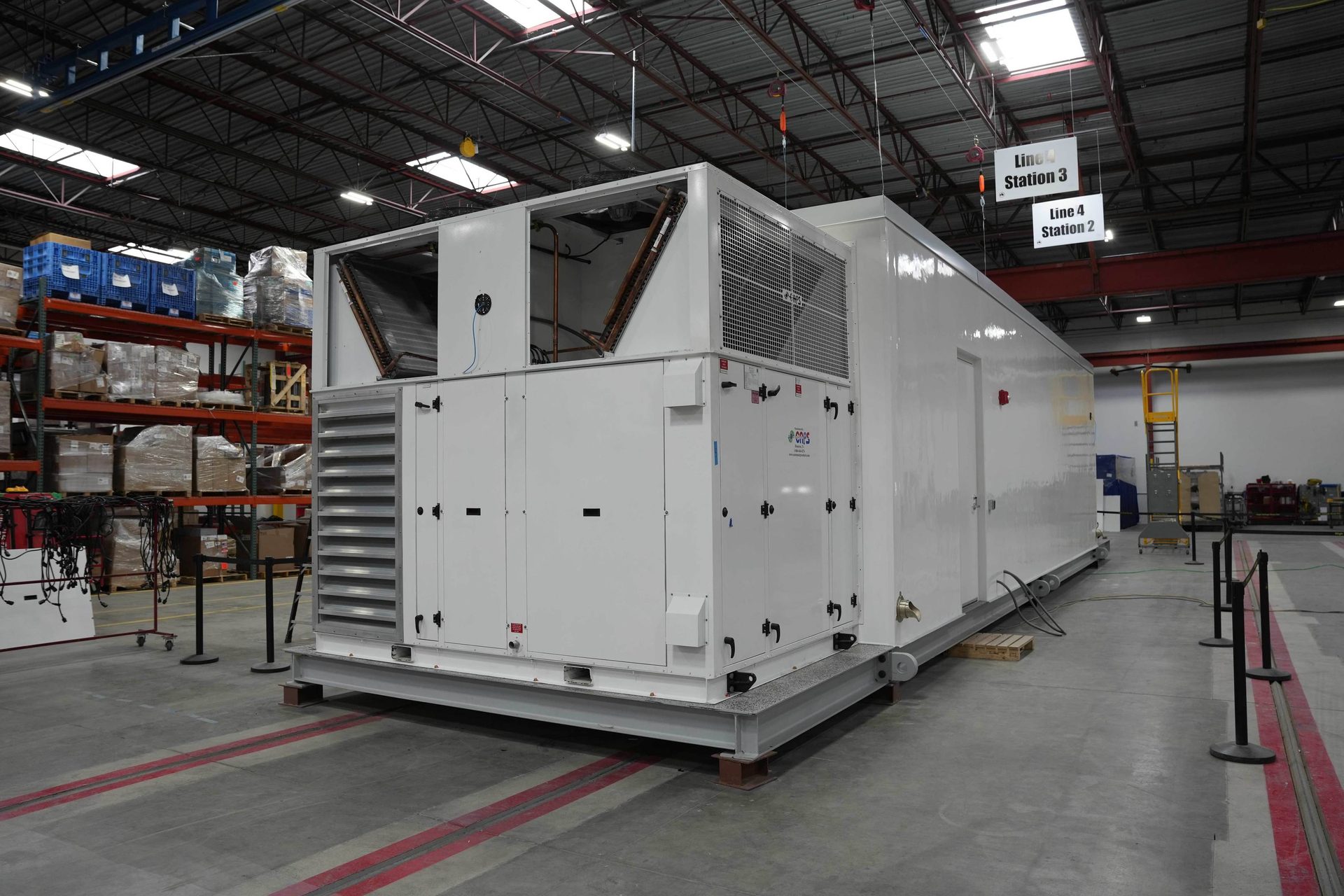
Compass Quantum's 100-kW modular data center solution is designed to meet the needs of any business that requires standard compute, storage, network, or high-performance computing capabilities with immediate capacity requirements.
Images courtesy of Compass Quantum
“Quantum can be used for a wide range of use cases, but we would like to highlight its use in helping organizations cope with the ‘the death of the AV Closet,’” said Tony Grayson, general manager, Compass Quantum. “Tens of thousands of these makeshift IT environments have outlived their useful life, and organizations face difficult decisions about how to replace them. Compass Quantum enables hospitals, manufacturing facilities, malls, stadiums, office buildings, government buildings, and other businesses to place racks on or near their premises, simplifying deployment and management.”
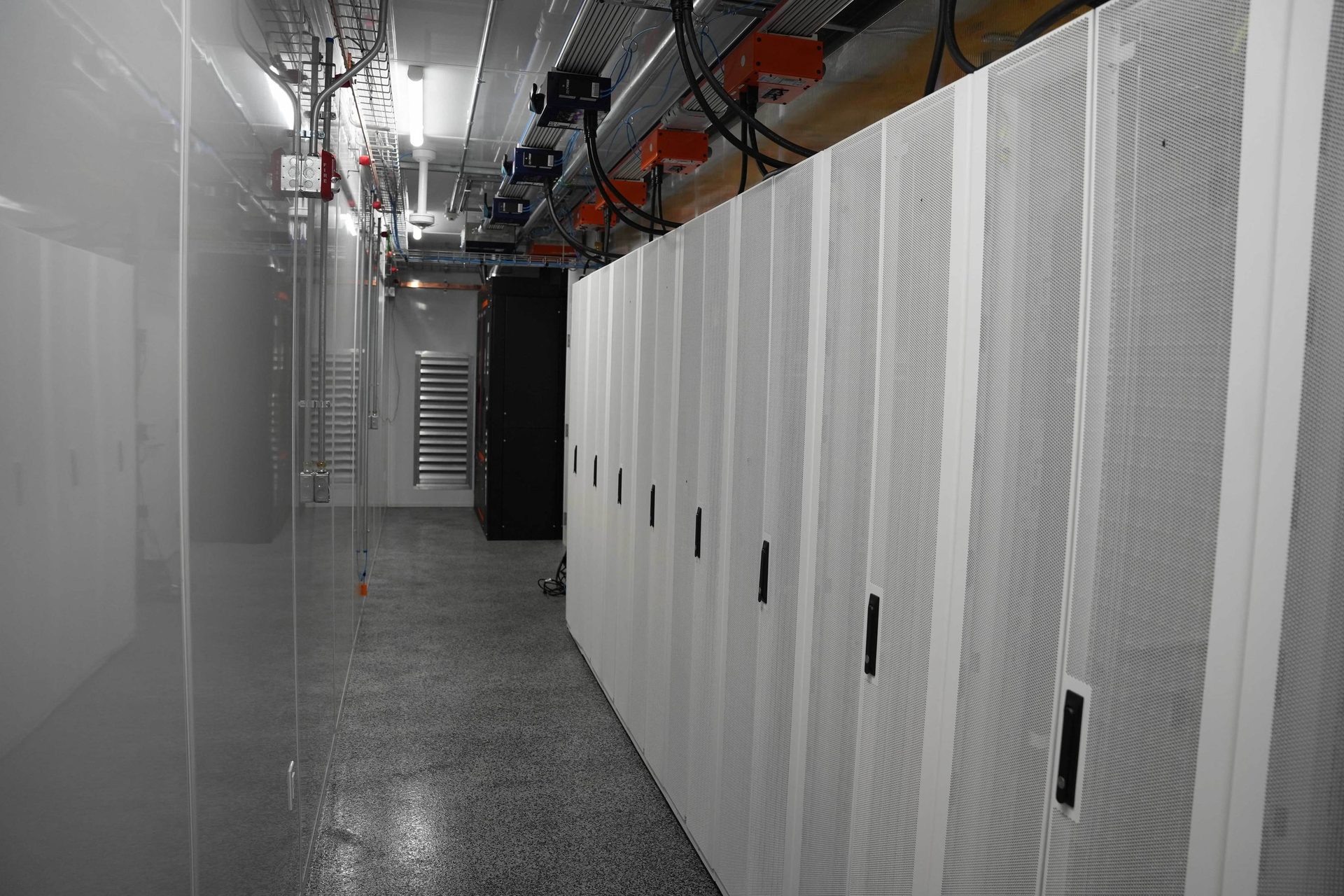
The fourth-generation Quantum module is built to deliver sustainability, rapid time-to-market, high quality, low TCO and advanced software capabilities.
The fourth-generation Quantum module is built to deliver sustainability, rapid time-to-market, high quality, low total cost of ownership (TCO) and advanced software capabilities. The solution is designed for a number of use cases, including organizations that want to deploy infrastructure on-premises or nearby, HPC nodes, upgrading data centers, moving out of retail locations, or providing a movable data center.
Quantum packages its 100-kW modular data centers within a comprehensive services structure that enables companies to rapidly deploy data center functionality without using their own capital, altering their existing operations, or increasing their headcount. The OpEx model covers the initial capital, manufacturing, permitting, delivery, installation, and operation of the infrastructure under an operating lease. At the end of the term, customers can purchase the infrastructure at fair market value, renew the lease, or have it removed.
The Quantum solutions includes a cutting-edge software layer that enables a truly "lights out" capability for modules, integrating with a wide array of sensors, controls, and security systems. This allows customers to operate thousands of sites without the need for significant human resources, streamlining operations, and enhancing efficiency.
Companies can replace their aging AV closets using an OpEx model that makes it fast and simple to add white space in 100-kW increments at the buildings where they are needed in any geographic location. By offering a fully managed operating lease model, Quantum not only provides the necessary capital but also handles the data centers' manufacturing, permitting, installation, and ongoing operation.
Power Solutions and Systems
Vertiv
NetSure IPE Series 48-2000C2
The space-saving NetSure IPE Series is ideal for use in network edge and access applications, including 5G small cells, RAN, and distributed antenna systems (DAS). Rapid deployment outdoors is easy, since the unit is hardened and does not require a separate housing for protection against the elements. With the frequent introduction of new technologies in the telecom space, many customers are finding that traditional rectifier solutions are not providing the protection required to handle startup current. With its higher-rated output fuse, NetSure IPE has helped customers overcome this issue.

The space-saving NetSure IPE Series is ideal for use in network edge and access applications, including 5G small cells, RAN, and distributed antenna systems (DAS).
Images courtesy of Vertiv
The Vertiv NetSure IPE Series high-efficiency R48-2000C2 outdoor rectifier is designed to support 5G radio applications with low power requirements, such as small cells and remote radio heads (RRHs). Fanless cooling eliminates maintenance and results in silent operation — ideal for rapid deployment in urban, rural, and noise-sensitive areas. The rectifier meets IP65 rating for use in harsh outdoor environments while delivering up to 96.3% efficiency. The rectifier is also available with lithium-ion battery backup to ride through power outages.
Extensive design, research, and testing went into maximizing the power output and efficiency while minimizing the size of the enclosure. Another important focus in the development was to minimize installation time to support a speedy rollout of 5G networks. This is especially relevant to the industry, as 5G adoption is increasing globally. Bluetooth and a dedicated app help simplify installation and service, addressing common customer challenges with other solutions that can cause delays in deployment and availability.

Rectifiers play a vital role in enabling connectivity for new applications relying on 5G technology.
Rectifiers at cell sites convert AC to DC power, which is used by telecommunications devices in concert with batteries to enable remote radios and ensure 99.999% availability. Thus, these rectifiers play a vital role in enabling connectivity for new applications relying on 5G technology. Given space constraints atop cell towers and highly congested urban areas, remote radios, outdoor rectifiers, and batteries must have a small form factor.
The compact size of this product, along with the power savings realized by eliminating a dedicated cooling system, enable 5G providers to deploy these units deep into the network to extend reach or dramatically simplify infrastructure at the base of the tower. With natural convection-cooled rectifiers and batteries, operators can remove enclosures and forced cooling equipment from the site, enabling savings in energy consumption and maintenance as well as in initial investment.
Racks
Schneider Electric
NetShelter Rack PDU Advanced APDU10450ME

NetShelter Rack PDU Advanced will change the mission critical industry by maximizing density, speed of deployment, and availability in data center.
Image courtesy of Schneider Electric
With customer feedback at the hear of its design process, the NetShelter Rack PDU Advanced helps IT professionals deploy equipment faster due to simpler planning and configuration. It can easily handle high-density loads with up to 48 outlets and more power than other APC PDUs. The rack can even prevent downtime with advanced redundancy features.
NetShelter Rack PDU Advanced is a best-in-class intelligent rack power distribution (PDU) with up to 50% more power, twice as many outlets, and a four-in-one combination outlet design for fast, flexible deployment. The rack is available in a broad range of configurations spanning 5 kVA to 34.6 kVA across metered, switched, and outlet metering functionality all in a single wide, 0U, vertical form factor.
NetShelter Rack PDU Advanced will change the mission critical industry by maximizing density, speed of deployment, and availability in data center.
Safety
Nextivity
SHIELD SOLO
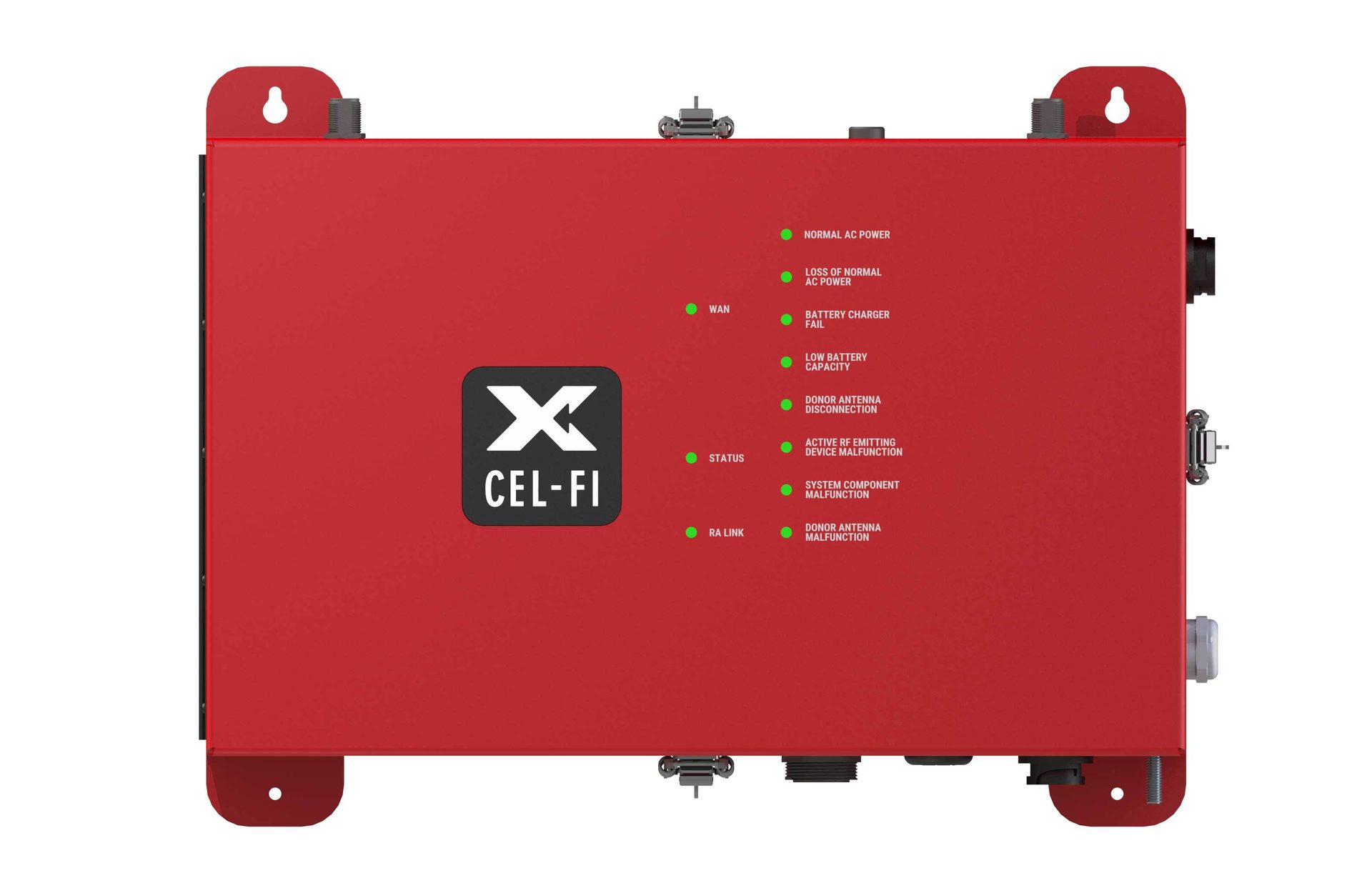
The SHIELD SOLO delivers uncompromising public safety coverage with industry-leading ease of installation and speed of deployment, and also offers best-in-class talk-in and talkout performance with a no-noise guarantee.
Image courtesy of Nextivity
Reliable communication is crucial in any emergency situation to coordinate rescue efforts, provide critical information to those affected, and coordinate response efforts among different agencies and organizations. The SHIELD SOLO public safety solution is a half-watt emergency radio communication system that ensures reliable communication for emergency personnel in any situation. It's an integrated public safety bidirectional amplifier (BDA) that provides 700/800 MHz land mobile radio (LMR) coverage and is an emergency responder communication enhancement systems (ERCES) solution that fully complies with current fire codes. This versatile system can be configured as a Class A or Class B device in the field and accepts DC power from either a certified third-party backup battery unit (BBU) device or the purpose-built SHIELD SOLO BBU to ensure coverage for up to 12 hours during power outages. SHIELD SOLO is easy to install, NEMA 4 rated, listed to UL 2524, and is compatible with other public safety systems.
“We’re honored to accept this award for SHIELD SOLO and appreciate the system being recognized for making it easier than ever before to deploy a half-watt ERCES public safety communication solution,” said Nextivity CCO Stephen Kowal. “From streamlined installation and system approval testing to reliable LMR connectivity for critical communication, SHIELD SOLO gives building owners, AHJs, and emergency personnel the peace of mind it will be installed and deliver trusted performance faster than any other solution.”
The research that went into SHIELD SOLO, is based on the same research that went into Nextivity’s CEL-FI cellular products — the creation and inclusion of Nextivity’s IntelliBoost technology. In CEL-FI cellular products, the IntelliBoost technology is built into a chip, while SHIELD products receive their smart features through software. With 16 years of experience in generating leading cellular connectivity products, Nextivity has created four generations of the IntelliBoost chip, which describes the collection of knowledge, technology, features, and functions that set Nextivity products apart from “dumb” repeaters. Nextivity makes “smart” repeaters or “smart” off-air signal boosters because of IntelliBoost. IntelliBoost is inclusive of multiple patented designs and processes, trade secrets, industry experience, and knowledge built up over the years.
"It is unique to Nextivity and unmatched in the industry, despite any such claims," Kowal said.
The performance improvements and other practical benefits of IntelliBoost technology, such as protecting the network, have been tested, certified, and well-documented.
The SHIELD SOLO delivers uncompromising public safety coverage with industry-leading ease of installation and speed of deployment, and also offers best-in-class talk-in and talkout performance with a no-noise guarantee. As the first solution in this class to monitor donor signal quality, SHIELD SOLO and the WAVE Portal enable system integrators and Authority Having Jurisdiction (AHJ) bodies to detect common installation issues such as time delay interference (TDI) and building-to-building interference. The system also offers real-time, high site-to-server antenna monitoring and reports performance metrics through the WAVE Portal, ensuring the signal is transmitted to all first responders within a building. SHIELD SOLO simplifies the optimization of uplink gain for emergency communication systems by eliminating the need for additional equipment or guessing the calculations. The system calculates path loss automatically, allowing for different values according to network requirements and the option to set up a target range. While isolation is calculated in real time and automatically set at 20 dB per NFPA 1221, the system allows for different values according to local ordinances. Downlink gain is automatically adjusted to achieve the required value. This helps prevent signal interference and ensures quality communication.
Traditionally, deploying an emergency communication system — which is legally required in many municipalities — is oftentimes a time-consuming and costly undertaking for building owners. Not only do building owners need to work with system integrators to ensure optimal coverage within their building, but after the installation of the ERCES, it must be approved by the local AHJ to ensure the system meets local guidelines. This approval allows the business to receive its certificate of occupancy and open its doors. Business leaders want a solution that is cost-effective and can be installed as quickly and easily as possible. The SHIELD SOLO accelerates this timeline and sets new benchmarks for ease of installation and speed of deployment for public safety communication solutions by automating system settings and parameters that once required tedious testing and adjusting. This precision not only gives building owners peace of mind that their system will pass AHJ testing on the first try but also allows installers to get in and out of projects faster than ever before.
Security
Edge360
Surveill
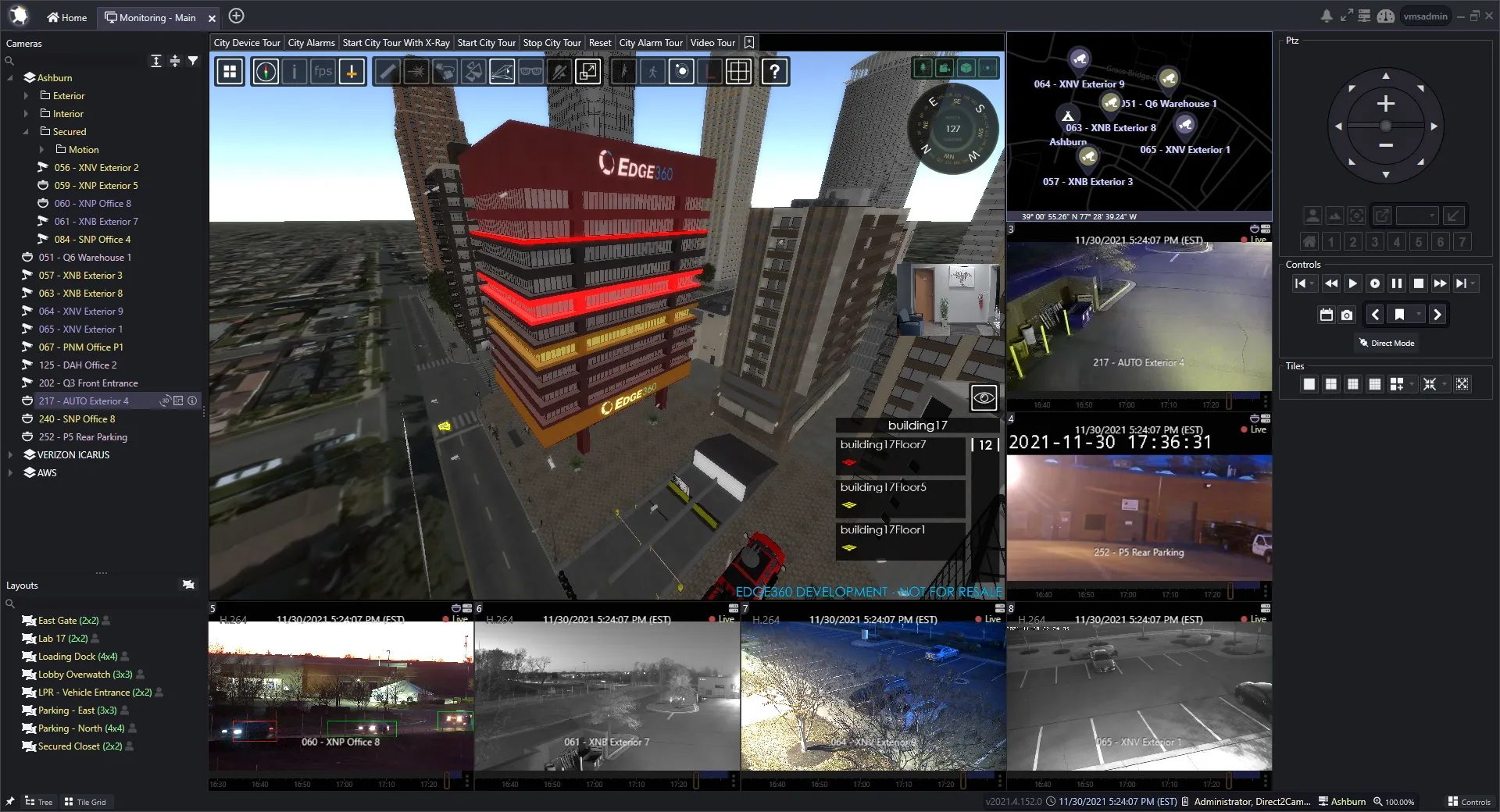
Surveill delivers an IT-friendly foundation with the performance, scale, and resilience required to support today’s demanding safety and operational requirements.
Image courtesy of Edge360
Developed specifically for mission critical video workloads, Surveill delivers an IT-friendly foundation with the performance, scale, and resilience required to support today’s demanding safety and operational requirements. Surveill is the first fully containerized VMS available — this approach to video management adds containerization to the operating system, which results in increased reliability, higher system uptime, and enhanced data security.
Surveill uses a containerized environment, which uses process isolation to prevent outside applications from interacting with it and accessing the host operating system directly. This isolation improves the overall security of the application. Surveill containers have all prerequisites preconfigured and installed for functionality and do not need additional frameworks or database software — they are ready to implement. This enterprise solution can scale regardless of an organization’s unique requirements and can fit into any sized environment, from a small business with one camera stream to a multisite deployment with thousands of IP camera systems globally. Surveill is built to upgrade and scale up with minimal effort and downtime.
Created specifically for mission critical environments, the core of this design is around having critical video streams available at all times. Surveill ensures streams are available through its Direct2Camera technology, which allows the user to access a camera stream directly from the camera itself if there is a server outage, and its Remote Connection Queueing technology, which manages and optimizes bandwidth to ensure no bandwidth overload through over-access.
"We have seen Surveill VMS be successful in a variety of environments, including data centers, campuses, retail, and transportation," said Brianna Ramos, public relations and marketing lead for Edge360.
Edge360 was founded in 2010 as an integrator in the public space. Early in its tenure, the company was approached by a high-profile federal department with requirements for a VMS to serve more than 150 offices worldwide.
"The project was our chance to make a name for ourselves," Ramos said. "If we could deliver."
Existing VMSs required downtime for managing maintenance updates and security patches — sometimes taking months to complete. Downtime also resulted from common conditions, like drops in bandwidth at remote locations. These issues still plague many VMS solutions used in business and on the market today.
The client needed a VMS that would perform with mission critical integrity against constant hostile physical and cyberattacks. The client required zero downtime among other things — these requirements became the recipe for Surveill.
Surveill was built to update in just a few clicks, requiring no downtime. It also has proper failover and remains operational even with all servers down.
"After passing rigorous testing, the first Surveill VMS was launched, purchased by the client, and still protects these same 150-plus critical facilities around the world day and night," Ramos said.
Software
Singlewire Software
Visitor Aware
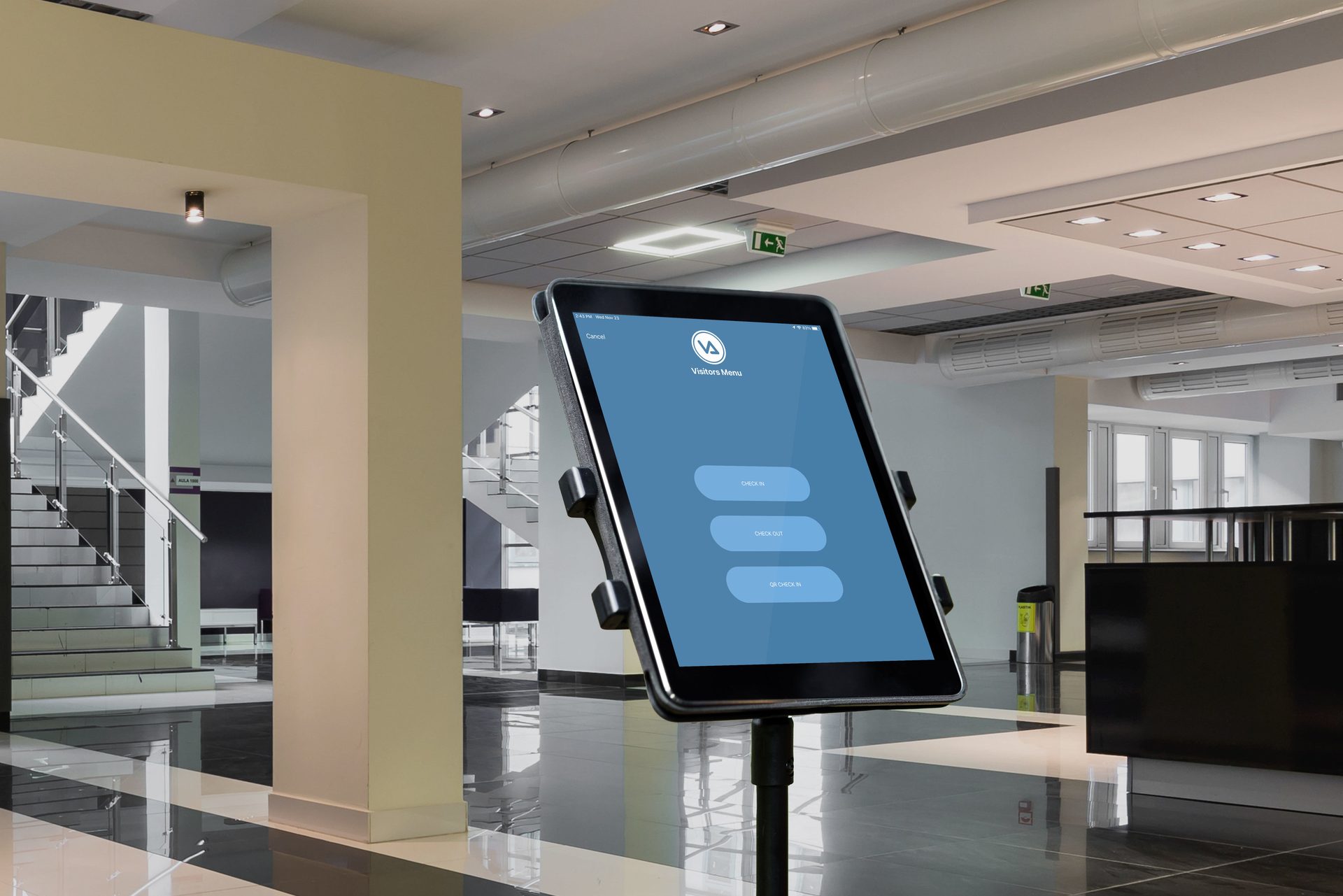
More organizations are coming to the realization that to maintain a secure facility, they need a secure entrance. Visitor Aware serves a first line of defense for organizations looking to preserve mission critical operations by identifying potential threats the moment they walk in the door.
Image courtesy of Singlewire Software

Visitor Aware from Singlewire Software is a visitor check-in and management solution that provides organizations with the tools to effectively screen visitors so they can identify threats the moment they enter a building and before unwanted guests gain access to sensitive areas. This comprehensive tool helps provide peace of mind to verify visitors, so organizations know the people in their buildings have been given permission to be there.
Visitors have their IDs scanned when they enter a building. The information on their ID is used in conjunction with encrypted facial recognition to screen visitors against national sex offender and government watchlists and active legal injunctions.
More organizations are coming to the realization that to maintain a secure facility, they need a secure entrance. Visitor Aware serves a first line of defense for organizations looking to preserve mission critical operations by identifying potential threats the moment they walk in the door. Using an iPad or handheld scanner, visitor information can be collected and run through national sex offender databases, government watchlists, and active legal injunctions. Matches are flagged and receptionists or security team members can be alerted that an unwanted guest is attempting to enter the building. This enables early intervention to prevent potentially dangerous or violent guests from gaining access. Visitors who are allowed to enter are approved within seconds of having their IDs scanned and organizations can have badges printed that approved guests can wear to signify they are permitted within the building. Visitor Aware also provides options guests can select for areas they are allowed to go within a building so security teams can quickly identify people who may wander into restricted areas
Singlewire Software has been at the forefront of emergency notification innovations for more than a decade. This comes from developing deep relationships with existing customers to understand their needs. In a recent customer survey, the company discovered that many customers were interested in integrating their emergency notification and incident management tools with their visitor management tools. The survey also revealed that, while many customers had a visitor management system in place, they were dissatisfied with how it worked. This led Singlewire Software to acquire Visitor Aware, which had also been developed with direct customer input. The team that developed Visitor Aware understood there were several components of existing visitor management solutions that customers did not like. That’s why the company developed a solution that was compatible with a wide range of scanners and printers, used facial recognition in conjunction with ID information to reduce the number of false positives, and create a system that could share information across sites.
Software
Vertiv
XR App

The Vertiv XR app helps to bring critical IT infrastructure to life through the power of augmented reality.
Images courtesy of Vertiv
The Vertiv XR app helps to bring critical IT infrastructure to life through the power of augmented reality, providing a virtual “try before you buy” experience not previously available for data center equipment. The app allows you to interact with Vertiv’s state-of-the-art digital infrastructure solutions as if the actual product is in front of you, from the comfort of your home or office or in the very space you need to deploy it. Simply choose a solution to explore, virtually place the realistic 3D model where desired, explore each component in detail, and walk around it to discover all its features from every possible angle. The app is convenient to download from the Apple App Store or Google Play.
With Vertiv XR, you are in control of product exploration, from one end to the other. You decide where to place the model, the features to look at, which functions deserve a more thorough inspection, and when to engage with product experts to tailor the solution to your specific needs. Not only does it provide a showroom-like experience without the hassle of being physically there, but also harnesses the power of AR for the most meaningful experience possible. Leverage the x-ray effects to spotlight the exact subsystem you're most interested in, then add another layer of additional information on your surrounding environment and learn how it will help you achieve your business goals. The app also offers an immersive test drive by leveraging the 3D animations to visualize otherwise impossible to see functional scenarios and invisible features in a comfortable, controlled, and engaging manner.
"When the pandemic struck, we took a step back and reflected on what we were doing for our communities, how we did it, and if it was the right way to move forward," said Sergiu Tiulimeanu, digital experience architect, Vertiv. "As a result, we recognized that the four mega-trends that influence consumer behavior worldwide and across sectors impacted our customers as well: generation shift, business shift, behavioral shift, and COVID-19 shift. After digging deeper into external research, we discovered that Millennials and Gen-Z individuals advancing into buying positions in the B2B landscape are changing the game. These tech-native generations are familiar with and used to leveraging the latest technologies in all aspects of their lives to simplify complex processes, meaning that we have an opportunity to engage with them on their terms by digitalizing and automating pre-sale customer experiences."
Research showed that individuals of these generations place a much higher emphasis on life experiences and relationships, and are much more environmentally aware, so the economic advantage or gain they would get from a transactional relationship is not the lead decision-making factor anymore. The best solution would be embodied by what is offered as an experience. The generational shift greatly influenced the shift in the business sector: businesses started to digitalize heavily, thus reducing their real-estate and embracing remote working, among other changes. Of course, these two shifts then determined another great change in the markets, this time on the consumer behavior side: people started to buy virtually just as seamlessly as they do physically, and at an unprecedented scale. The last global shift, the COVID-19 pandemic, accelerated digital transformation by three to five years, and it strengthened the path to virtualization because physical contact was restricted, travel was no longer possible, and mobility itself was reduced. This experience created a number of new somatic markers and market entry points for consumers, with the newly discovered alternatives now coexisting with the transformed, old ones.
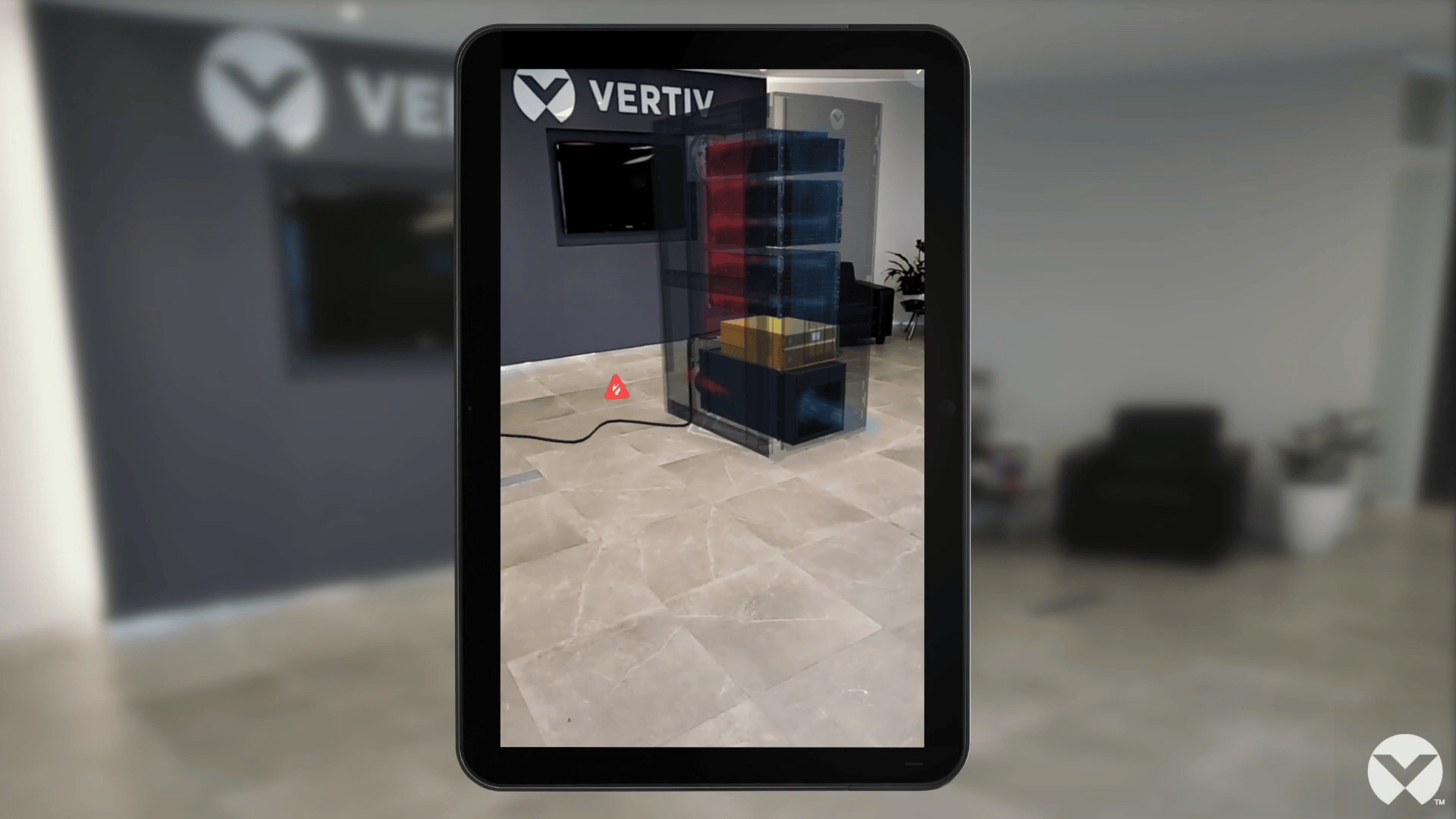
"We found, thanks to the likes of Forrester, Gartner, Forbes, TechRepublic and others, that these shifts were impacting both B2C and B2B.," Tiulimeanu said.
After that step of the research was completed, it was time to apply scientific methods to the user experience, with rigorous content analysis, factorial analysis, and semi-guided interviews with people in direct touch with the market.
“We appreciate Mission Critical naming Vertiv XR App as the winner of the Software category in the Top Tier Product awards," Tiulimeanu said. "This project has been amazing for our team to work on, and we are excited to share the industry’s first-of-its-kind interactive tool for data center professionals. We are prepared to keep pushing the envelope of possibilities for Augmented Reality in the data center experience space.”
Thermal Management
Iceotope
KUL Extreme
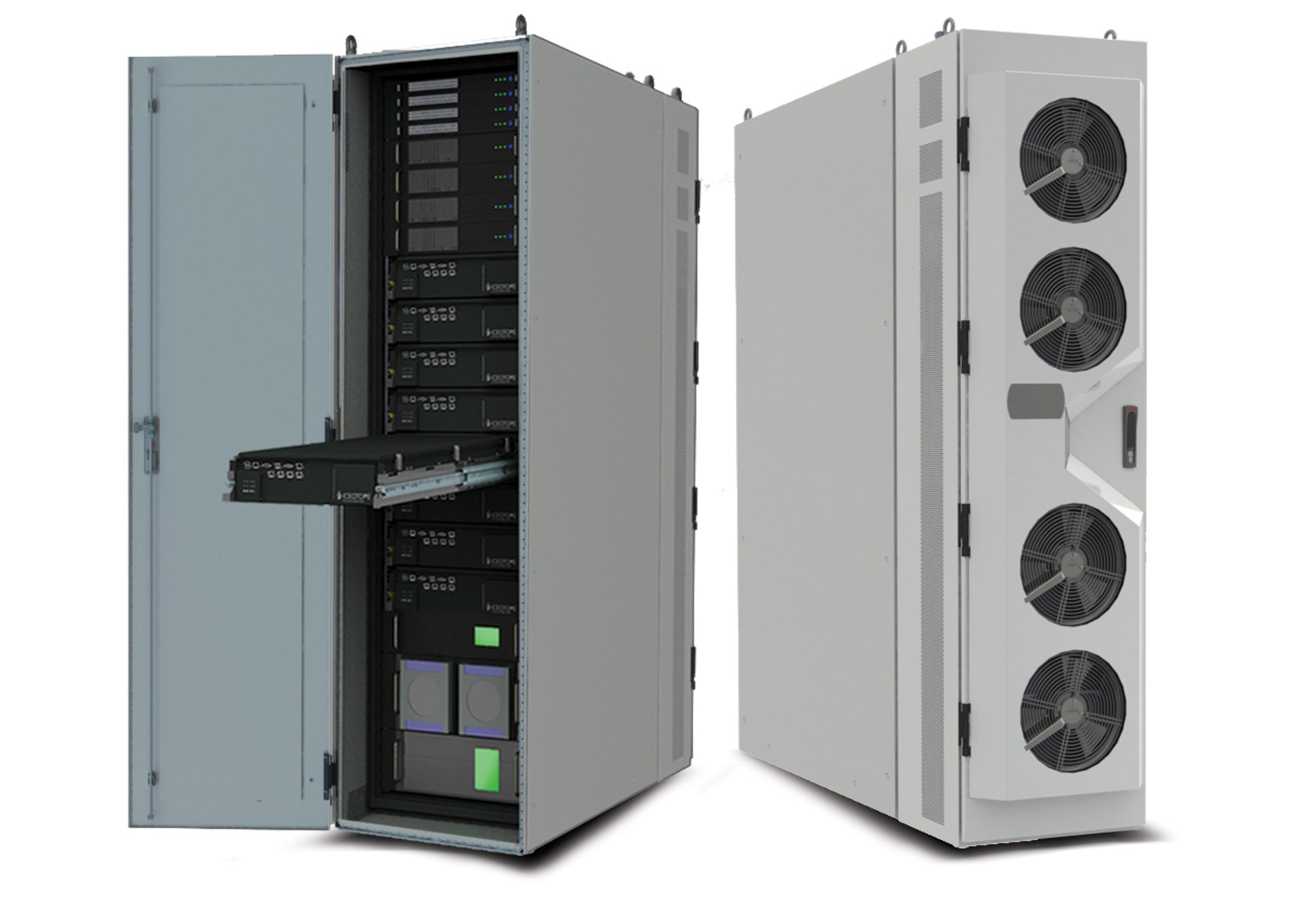
KUL Extreme is an Open RAN liquid cooling solution resulting from a close collaboration between Iceotope, Hewlett Packard Enterprise (HPE), Intel, and nVent to support far edge computing across the entire data center estate.
Images courtesy of Iceotope
KUL Extreme is an Open RAN liquid cooling solution resulting from a close collaboration between Iceotope, Hewlett Packard Enterprise (HPE), Intel, and nVent to support far edge computing across the entire data center estate. Applications in these workloads require ultralow latency and high scalability to process large volumes of data close to where the data is generated, often in remote locations. The product significantly reduces energy consumption and delivers a sustainable solution across distributed workloads, for both telco service providers and enterprises.
Created with the most demanding workloads in mind, KUL Extreme is a fully integrated, standardized solution that offers greater sustainability, energy efficiency, and serviceability for server generations to come. The modular design of KUL Extreme is highly configurable to enable rapid scalability across all types of deployments. From a single server at a cellular base station to a ruggedized solution for the far edge to an enterprise-grade data center, each KUL Extreme unit can easily be dropped into place at any location. The solution supports both high-performance liquid and air-cooled devices while optimizing serviceability and simplifying maintenance across the data center estate.
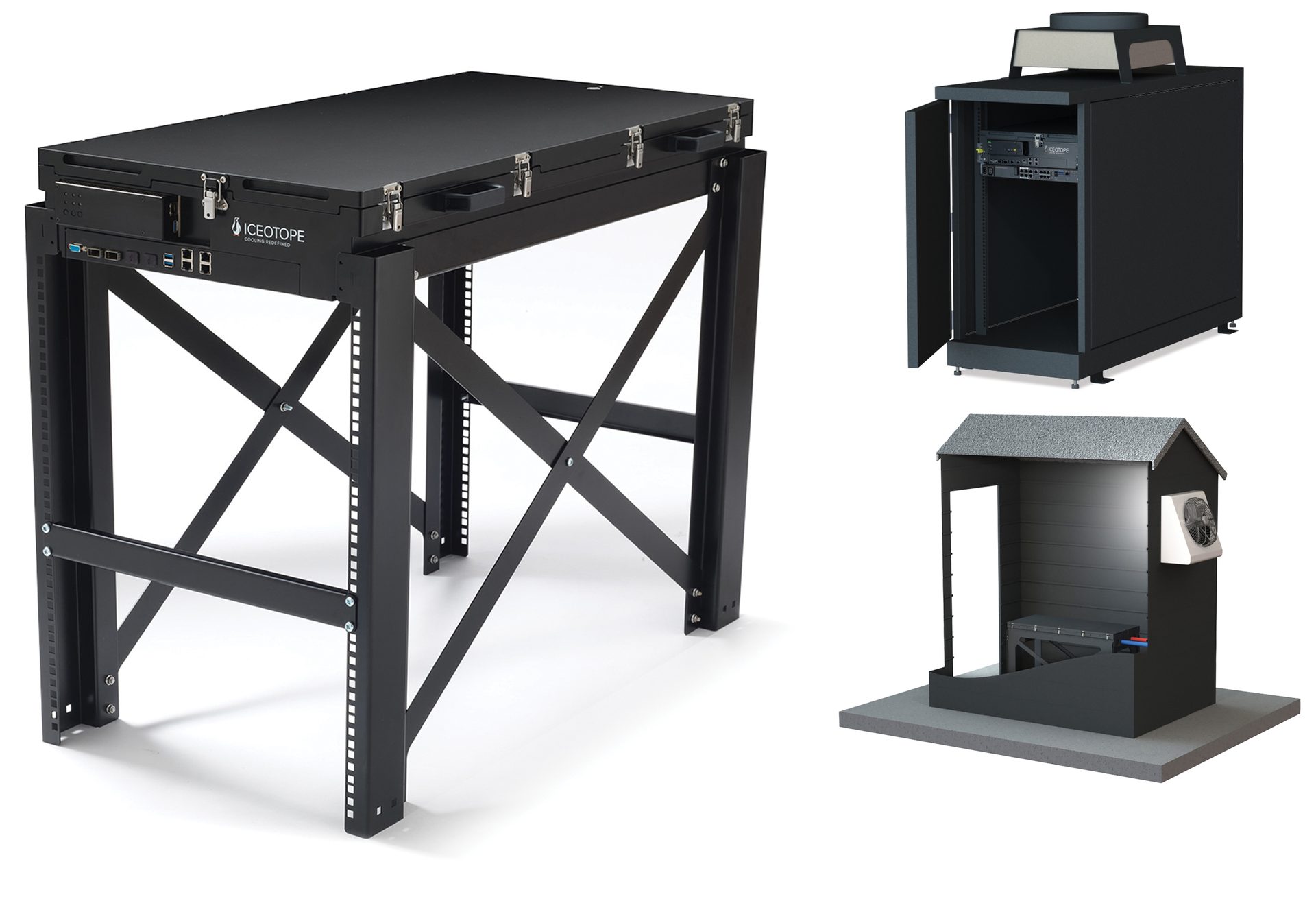
The KUL Extreme is a versatile precision liquid cooled server platform that can be used in various applications where high-performance computing, density, and energy efficiency are required.
KUL Extreme was designed for a variety of data center and edge computing applications, including:
- High-performance computing (HPC) and artificial intelligence (AI) workloads that require high computing power and efficient cooling.
- Edge computing where space is limited and traditional air-cooled servers may not be suitable.
- Far-edge deployments where servicing devices is costly and minimizing on-site maintenance is key.
- Cloud computing environments that require high computing power, high-density server deployment, and efficient cooling.
The KUL Extreme is a versatile precision liquid cooled server platform that can be used in various applications where high-performance computing, density, and energy efficiency are required.
Iceotope, HPE, and Intel have a long-term partnership focused on addressing sustainability, serviceability, and scalability at the edge. With a deep understanding of the needs of data centers and enterprises operating at the edge, the companies worked together to create KUL Extreme to be capable of delivering more compute power to facilitate 5G, AI, and IoT use cases. Research for the project focused on addressing the challenge of not only powering the computer systems themselves, but creating an innovative solution for powering the cooling systems to solve the overall energy efficiency problems edge data centers face.
As part of their combined research, Iceotope, Intel, and HPE have benchmarked the power consumption of a sample IT installation being cooled respectively using air and precision immersion liquid cooling. The results show a substantial advantage in favor of liquid cooling, including massive energy savings of up to 30%, a significant uptick in processing performance and reliable server operations at full throttle.
The laboratory tests also showed the Iceotope precision liquid-cooled system enabled a 4% increase in server performance at elevated temperatures. The liquid cooling systems also consumed 1 kW less energy at rack level than its air-cooled counterpart, representing a 5% energy savings in the IT equipment alone. Assuming a typical cooling power usage effectiveness (PUE) of 1.4 in air and 1.04 in liquid-cooled data centers, data center cooling power using liquid is now only 0.7 kW — a figure 1/10 of the air-cooled system. Total power consumption is now 19.3 kW, more than 8 kW less than the air-cooled system,
The product development process involved combining the best tech from all four companies (Iceotope, HPE, Intel, and nVent). The resulting design integrates Iceotope’s KUL Extreme chassis with high-performing HPE ProLiant DL110 Telco servers that are workload-optimized for RAN. The technology also incorporates Intel's latest processor technology and nVent’s flexible and modular portfolio of racks and enclosures, altogether creating a custom, scalable solution for remote environments. The sustainable solution can be used by both telco service providers and enterprises across distributed workloads, including high-performance computing, edge computing, cloud computing, financial services, and scientific research.
UPS Systems
ZincFive
BC 2
The industry has utilized lead-acid battery storage systems for decades and has incurred design compromises and infrastructure costs associated with the low power density, excessive weight, short life, limited thermal operating range, outgassing in operation, and a pollutive recycling process associated with lead-acid batteries. Lithium batteries are being adopted and, while they resolve some of the issues of lead-acid, there is still a limited operating temperature range and concerns over safety and recyclability. A transition from lead acid to alternative battery chemistries is underway in the mission critical industry and nickel-zinc resolves the compromises, enabling a superior technical solution that is safe, reliable, and sustainable while delivering a low total cost of ownership.
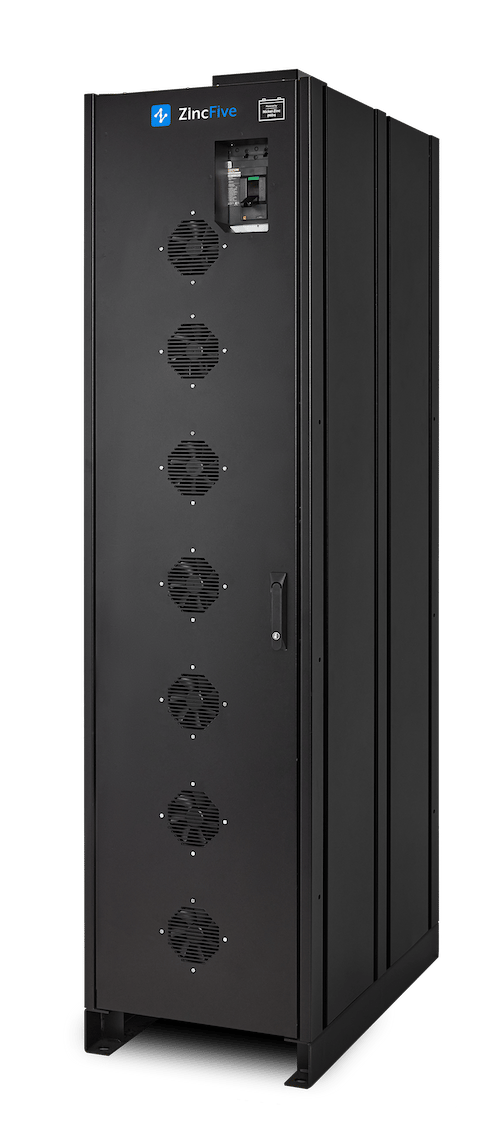
ZincFive BC 2 is the newest product in the BC Series UPS Battery Cabinet lineup.
Images courtesy of ZincFive
ZincFive BC 2 is the newest product in the BC Series UPS Battery Cabinet lineup. ZincFive BC Series UPS Battery Cabinets are the first nickel-zinc battery energy storage solution with backward and forward compatibility with megawatt class UPS inverters. The BC 2 offers the smallest footprint per kilowatt, improving on the previous record-holder, ZincFive’s original BC Battery Cabinet. Despite the high-power density, the BC 2 with nickel-zinc batteries can safely deliver. ZincFive’s batteries were tested at the cell level to UL 9540A, a test method for evaluating thermal runaway, and did not exhibit thermal runaway in any of the five arduous and destructive tests. Furthermore, independent third-party expert analysis of end-to-end environmental impact shows ZincFive’s nickel-zinc batteries to have a climate impact score significantly superior to lead-acid and lithium battery chemistries.
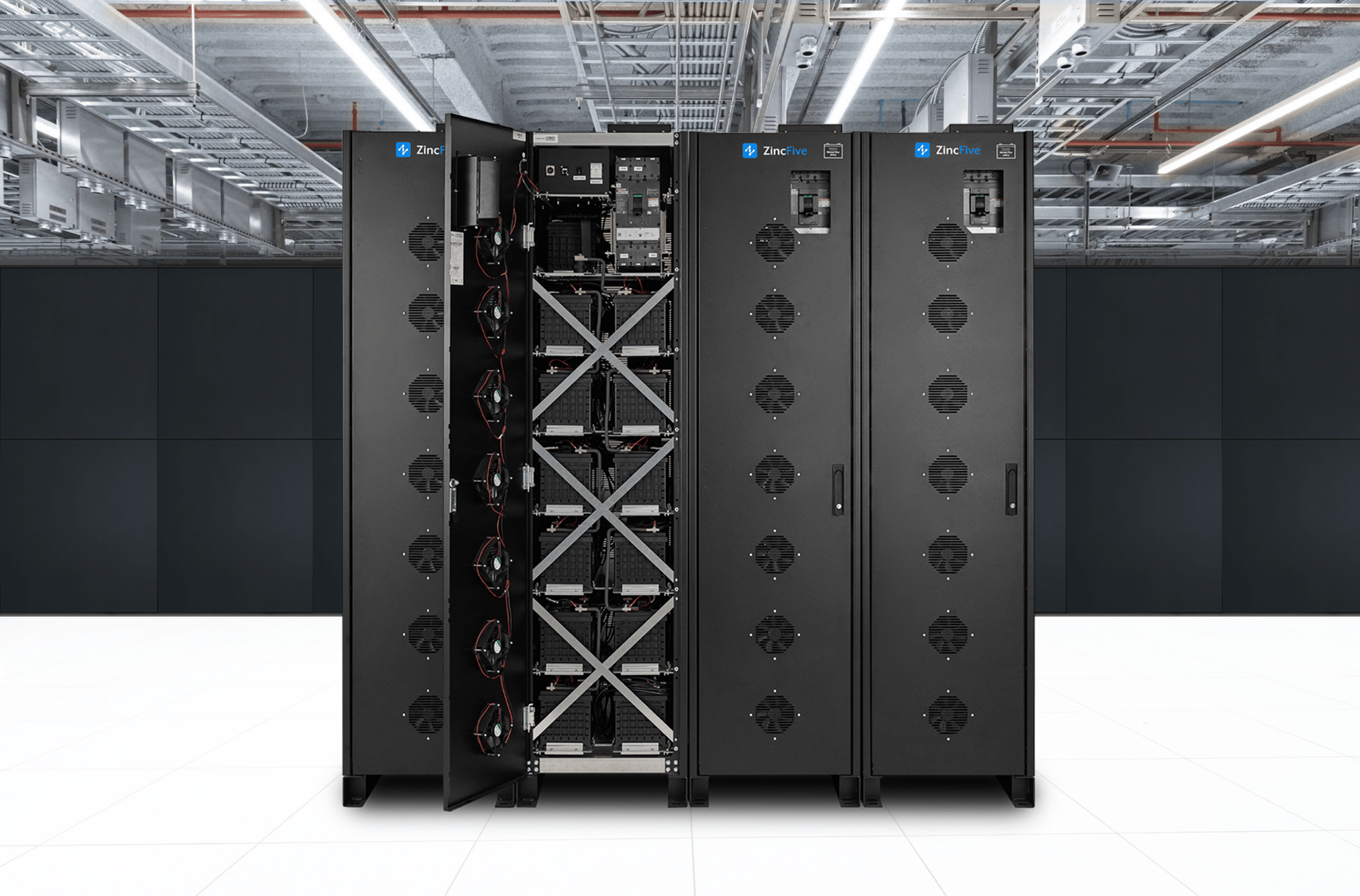
The BC 2 Battery Cabinet measures only 21 inches in width, giving it an industry-leading compact footprint.
The BC 2 Battery Cabinet measures only 21 inches in width, giving it an industry-leading compact footprint. The cabinet is robust, having passed a seismic shake test to an SDS of 2.29 g, resulting in a strong global seismic footprint. Other features include active cooling for a wide operating temperature range, simple maintenance, and easy conduit landing connections. ZincFive’s newest BC 2 Battery Cabinet provides optimized design and packaging while utilizing the same reliable Ni-Zn batteries that have been delivering best-in-class power density as well as superior safety and sustainability for over 10 years.
Video by DigitalBackground from Pixabay
Amy Al-Katib
Amy Al-Katib, CDCDP, is editor-in-chief of Mission Critical magazine. She is a member of 7x24 Exchange Intl., ASIS Intl., BICSI, iMasons, the International Society of Philosophical Enquiry, and Mensa. She holds a bachelor’s degree in journalism from Michigan State University and a certificate in STEM/computer science from New York University. She is currently enrolled in the Master's of Science Cybersecurity program at NYU. Reach her at al-katiba@bnpmedia.com.


